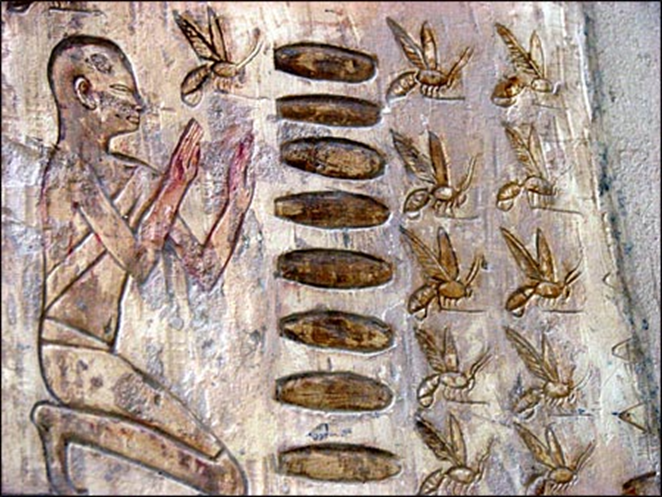Social Bees in Wild Habitats
European honey bees (Apis mellifera) and bumble bees in wild habitats
Social bees like honey bees and bumble bees live in large colonies, each colony functioning as a “superorganism” – in other words, a large number of highly organized individuals working together as one collective being. One colony of bees essentially functions as a large animal, and like all large animals they benefit from sufficient space to live and reproduce successfully. Protected wildland habitats are important for bee conservation because they provide both ample space and reduced interference from human activities.
HONEY BEES:
- Honey bees are native to Africa and Eurasia, and were introduced to the Americas in the 16th century. They have been domesticated for at least 4,400 years; there are probably no “wild” populations of honey bees left, because of continual crossing with feral domestic bees for several millennia.
- Honey bees are excellent generalist pollinators of a wide variety of flowering plants, including many that grow on public lands and other wild lands.
- Honey bees have become naturalized in the Americas (i.e., they live and reproduce in unmanaged settings, including natural areas, urban centers, and farm lands). Thus, they can be considered an invasive species. Although they are vital to modern agriculture, in natural habitats they can rightfully be viewed as pests in some situations.
- Because honey bees are not native to the new world, they represent potentially harmful impacts for native bee species and other flower-feeding animals that co-evolved with native flowering plants, impacts arising from competition for floral resources (e.g., seehttp://www.esajournals.org/doi/abs/10.1890/02-0626 ).

- Africanized honey bees in the new world, including large areas of the southern United States, Mexico, Central America, and South America, compete with cavity-nesting birds for nesting sites. Africanized bees also occasionally attack people.
BUMBLE BEES:
- Like honey bees, bumble bees are important generalist pollinators of a wide variety of flowering plants. Because of their thick coat of “hairs” (setae) and stocky build, bumble bees can forage in cooler weather than other bees.
- There are nearly 50 bumble bee species in North America, including some in serious decline. To learn more about bumble bee life history and recent declines, see http://www.fs.fed.us/wildflowers/pollinators/documents/ConsMgmtNABumbleBees.pdf
- Wild lands provide important refuges for bumble bees, and can help stabilize populations. Large blocks of natural land help reduce habitat fragmentation for bumble bees and other wild bees. For more information on habitat fragmentation and other causes of bee decline, see http://www.xerces.org/wp-content/uploads/2012/06/conserving_bb.pdf
- To participate in a “citizen science” effort to track North American bumble bees, visit http://www.xerces.org/bumblebees/ and find out how you can contribute.
